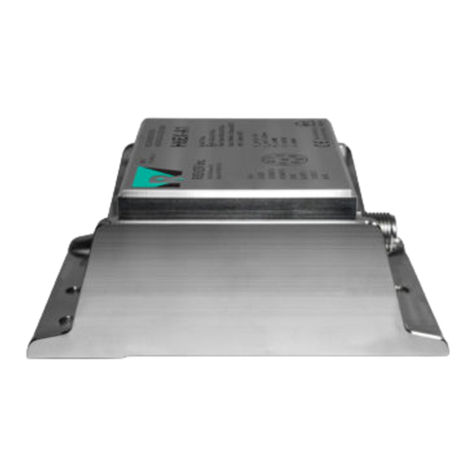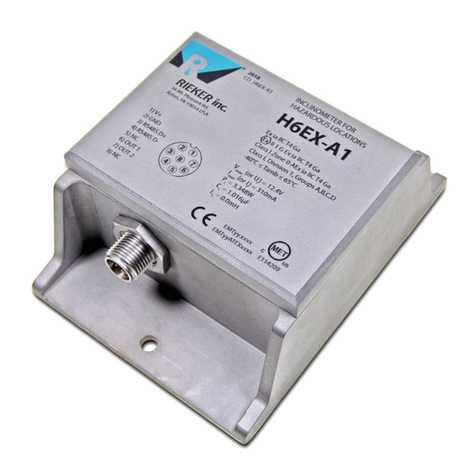
MPI User Guide
Page 1 of 28
RIEKER INC • 34 MOUNT PLEASANT ROAD • ASTON • PA • 19014 • USA
610-500-2000 fax: 610-500-2002 support@riekerinc.com www.riekerinc.com
The information and material presented may not be published, broadcast, rewritten, orredistributed without the expressed written consent of Rieker®Inc.
The content presented is provided for informational purposes only and subject to change.
©2019 Rieker®All Rights Reserved.
FORM NUMBER: MP0002_04/21 UPDATED: 4/19/21
PRODUCT SAFETY GUIDE FOR RIEKER MPI DIGITAL GRAPHIC DISPLAY
Important safety, health, and regulatory info that applies to the Rieker MPI Digital Graphic Display.
WARNING: Outdoor and Wet Conditions Use
The Rieker MPI device is rugged and dust tight – it is NOT waterproof and is not impervious
to water damage in wet environments. To avoid damaging this device, do not submerge it or expose
it to excessive rain or moisture. To reduce the risk of fire or shock, do not attempt to change
batteries in rain or excessive moisture conditions.
WARNING: Do Not Attempt Repairs
Do not attempt to take apart, open, service, or modify the product, accessories, or power
supply. Doing so could present the risk of electric shock or other hazard. Any evidence of any
attempt to open and/ or modify this device, including any peeling, puncturing, or removal of any of
the labels, will void the Limited Warranty.
WARNING: Battery Safety
This device contains a lithium ion battery, improper use of which may result in fire or
explosion. To reduce the risk of fire or explosion, do not heat, open, puncture, mutilate, or dispose
of the product in fire.
Do not leave the device in direct sunlight, such as on the dash of a car in the summer, for an
extended period of time. Product contains rechargeable batteries do not recharge your device near
a fire or in extremely hot conditions.
WARNING: Proper Storage - Extreme Environmental Conditions
Only store your Rieker graphic display device in a clean, dry environment. Do not store your
Rieker MPI device where the ambient temperature is above 158°F (70°C) or below -4°F(-20°C). Do
not store your Rieker device where is it exposed to strong electromagnetic fields or where it may be
exposed to direct electrical current. Using or storing the Rieker MPI device in an environment where
the external temperature varies widely and quickly might damage the display. When moved to a
location with a temperature difference of 20°F (11°C) or more from the previous location, allow the
device to come to room temperature before turning it on.
WARNING: Potentially Explosive Atmospheres
Areas with potentially explosive atmospheres are often, but not always, posted and can
include fueling areas, such as below decks on boats, fuel or chemical transfer or storage facilities,
or areas where the air contains chemicals or particles, such as grain dust, or metal powders. The
Rieker MPI device is NOT rated for hazardous locations. When you are in such an area, turn off the
device, and do not remove or install battery chargers, AC adapters, or any other accessory. In such
areas, sparks can occur and cause an explosion or fire.
CAUTION:
This MPI has been manufactured to allow for trip angle adjustment. Purchaser assumes the
responsibility of ensuring that the settings are appropriate for their specific application. IN NO EVENT
WILL RIEKER BE LIABLE FOR CONSEQUENTIAL OR INCIDENTAL DAMAGES OF ANY KIND.
CALIBRATION NOTES: This instrument has been calibrated to perform to precise
specifications. Any tampering or reconfiguration of this instrument may change the
properties of the product, and will therefore void the warranty. All sensors are sealed. If the seal is
broken the calibration and warranty is void.






























